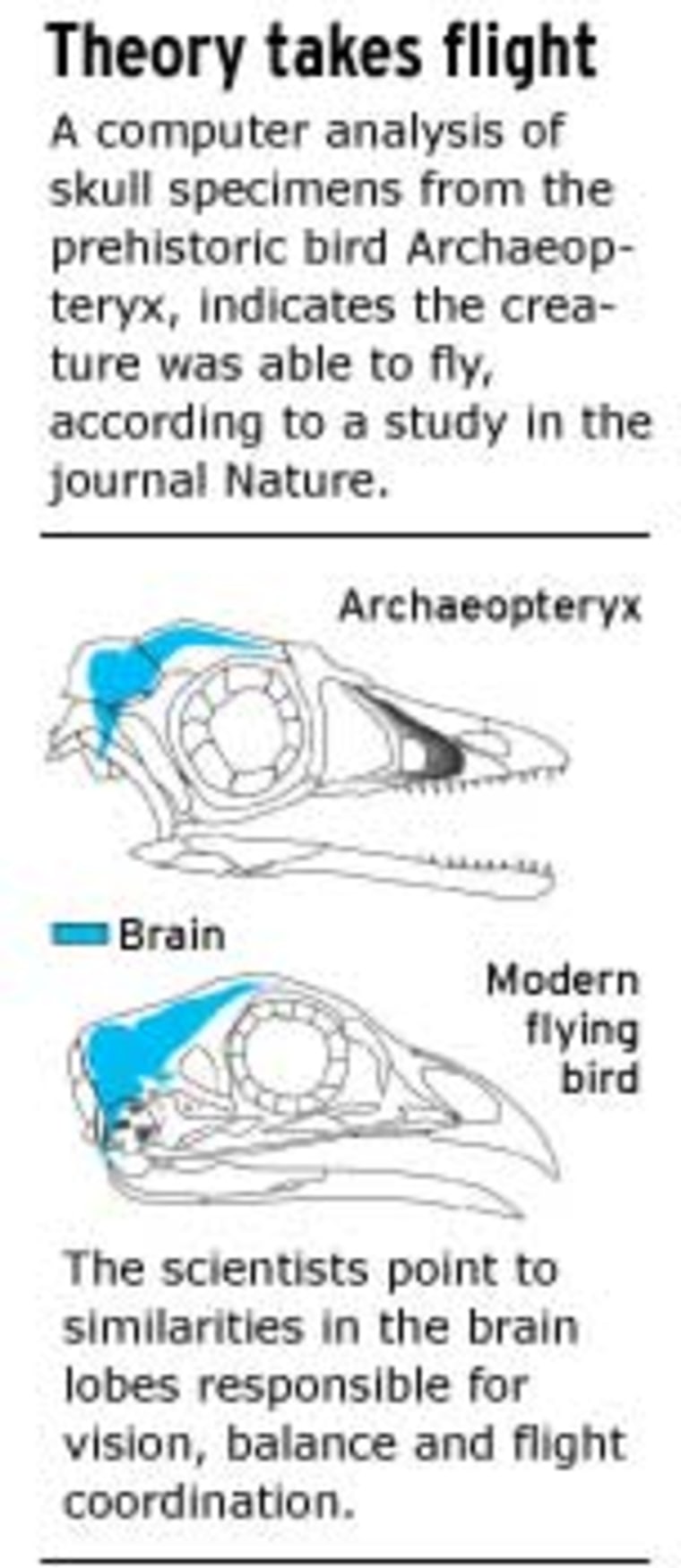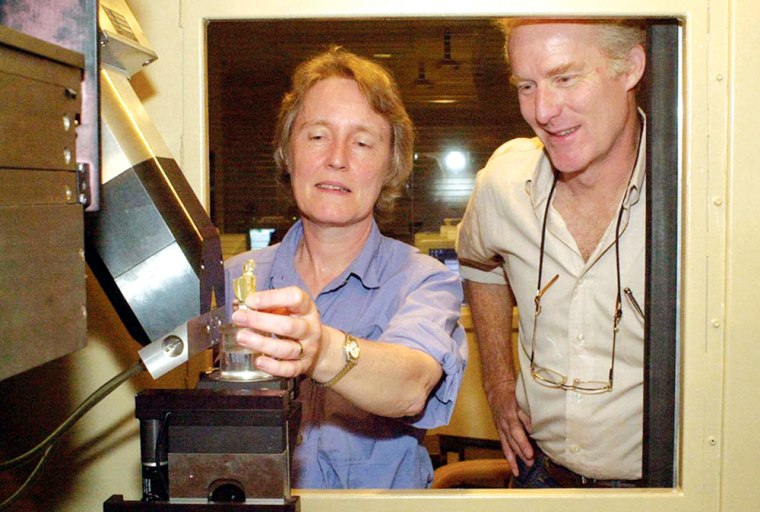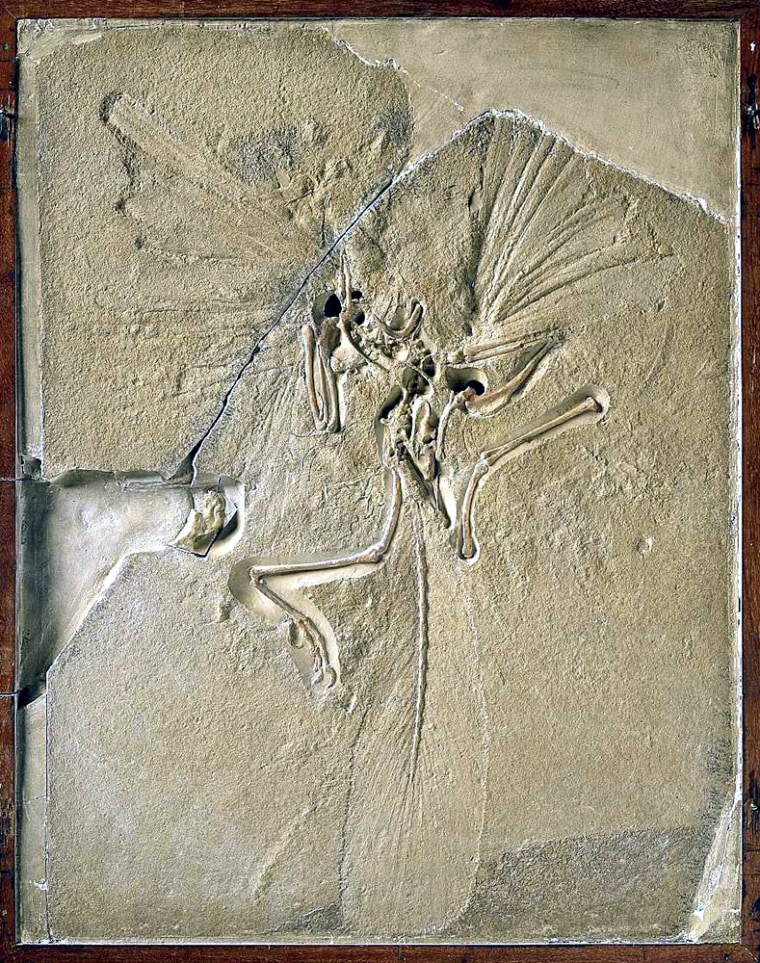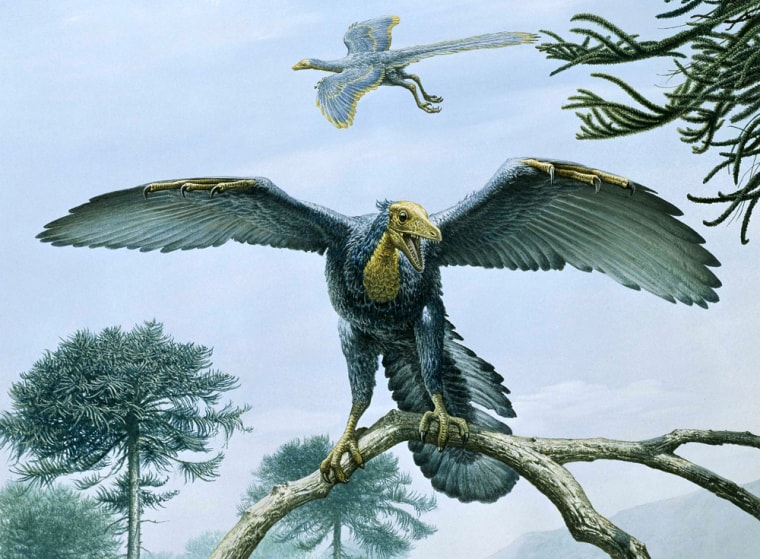A bird that lived 147 million years ago had a brain similar to a modern eagle or parrot and all the equipment for flight, scientists said Wednesday.
Archaeopteryx is the most ancient bird known. It had the bony tail and teeth of a dinosaur and the feathers and wings of a bird, and scientists have long assumed that it was capable of flight. But in the latest study, researchers in the United States and Britain looked at the physical specifications behind that assumption.
Using sophisticated computer imaging of the braincase from of fossil of Archaeopteryx found in Germany in 1861, the researchers determined that the creature had all the characteristics and brain power to conquer the skies.

“Archaeopteryx’s brain, its senses and its ear turned out to be surprisingly more birdlike than we thought,” Angela Milner, a paleontologist at the Natural History Museum in London, said in an interview. “It is regarded as the most primitive bird we know, and its skeleton is almost all dinosaur except that it has feathers and wings, so we were surprised that its brain was already quite an advanced birdlike brain.”
The particular shape of the brain, its inner ear which is linked to balance, and its sensory ability have convinced scientists it was capable of flying.
“It had everything in place in its neurosensory functions and structures that suggest it was well-equipped to fly,” Milner added.
The origins of flight
Archaeopteryx was small — about the size of a crow. The evidence showing it was capable of flying, reported in Thursday's issue of the journal Nature, raises new questions about the origins of flight.
“Archaeopteryx’s brain was fully equipped for flight and it had a birdlike brain. Obviously the evolutionary trends that led to that must have happened a lot further back in time than we really thought,” said Milner.

Scientists at the London museum removed the 0.8-inch (20-millimeter) braincase from the rest of the fossil and collaborated with researchers at the University of Texas at Austin, who constructed a three-dimensional model of its brain using computer images.
“This animal had huge eyes and a huge vision region in its brain to go along with that, and a great sense of balance,” said the University of Texas' Timothy Rowe. “Its inner ear looks very much like the ear of a modern bird.”
Significant visual ability and brain power were thought to be needed to coordinate information from the eyes and ears that is essential for flight.
A bird's 'onboard computer'
In a commentary in the journal, Lawrence Witmer of Ohio University College of Osteopathic Medicine in Athens, Ohio, described the research as a landmark study.

“The results have implications for both the biology of Archaeopteryx and the evolutionary transition to birds,” he said.
Previous studies have looked at the structure of wings and features for clues about the creature’s ability to fly, Witner noted.
“But flight isn’t just about wings, rudders and flaps. It’s also about the pilot and onboard computer, and those are the missing elements that this new study provides for Archaeopteryx,” he added.
